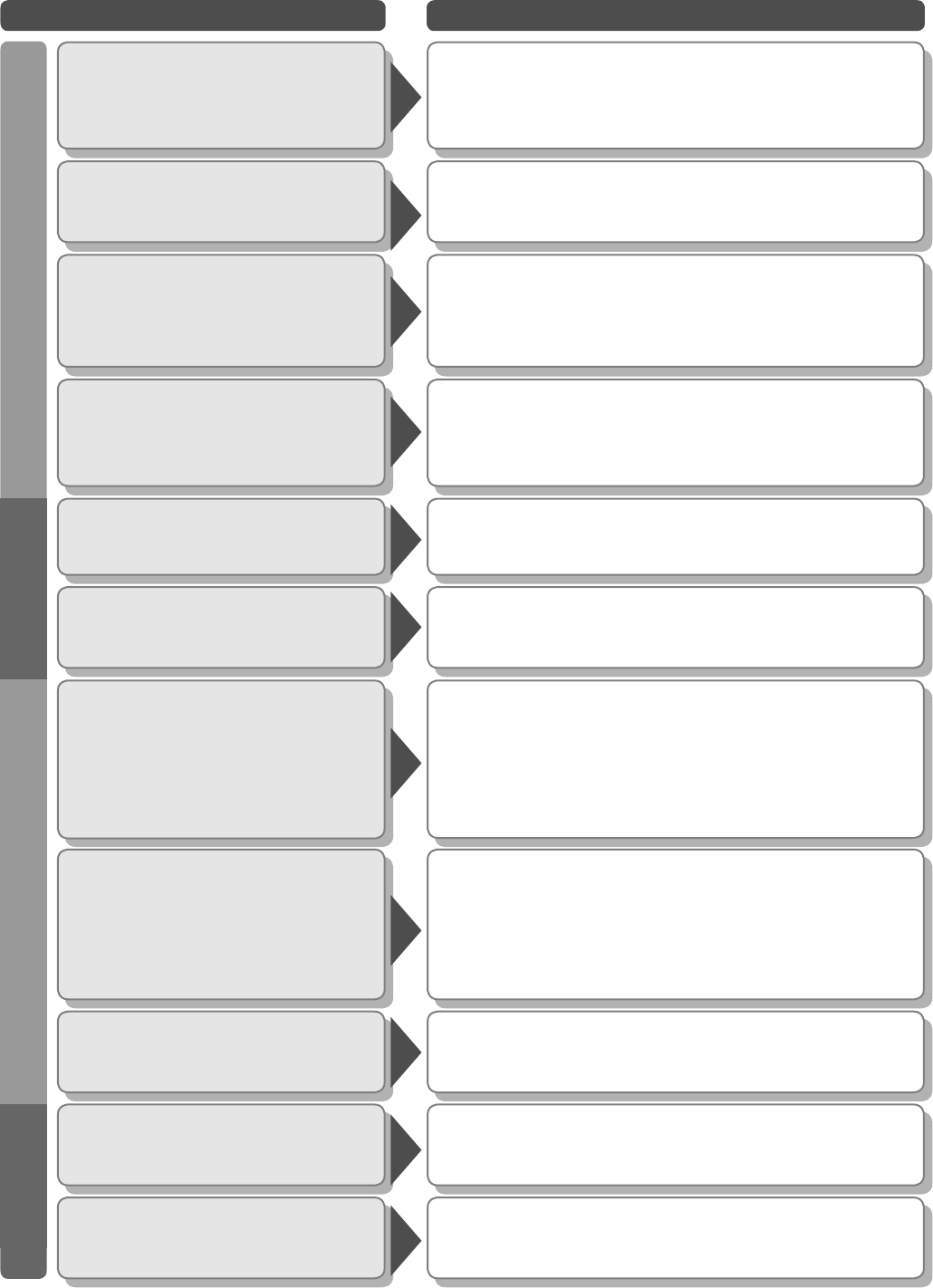
FAQs, etc.
28
29
FAQs
Specifi cations
Note
•
Design and Specifi cations are subject to change without notice. Weight and Dimensions shown are approximate.
TX-26LX60A TX-32LX60A
Power Source
AC 110-240 V, 50 / 60 Hz
Power
Consumption
Average use 109 W 168 W
Standby condition 0.9 W
LCD Panel
Aspect Ratio 16:9
Visible screen size
(No. of pixels)
66.1 cmV 80.0 cmV
576 mm (W) × 324 mm (H) 698 mm (W) × 392 mm (H)
1,049,088 (1,366 (W) × 768 (H)) [4,098
× 768 dots]
Sound
Speaker
12 cm × 6 cm × 2 pcs, 4
Ω
Audio Output 20 W (10 W + 10 W), 10% THD
Headphones M3 (3.5 mm) Jack × 1
Receiving Systems /
Band name
Receiving Channels
(Regular TV)
Aerial - Rear VHF / UHF
Operating Conditions
Temperature : 5 °C - 40 °C
Humidity : 5 % - 90 % RH (non-condensing)
Connection Terminals
AV1
Input
AUDIO L - R RCA PIN Type × 2 0.5 V [rms]
VIDEO
RCA PIN Type × 1 1.0 V [p-p] (75
Ω
)
S VIDEO
Mini DIN 4-pin Y:1.0 V [p-p] (75
Ω
) C:0.286 V [p-p] (75
Ω
)
AV2
Input
AUDIO L - R RCA PIN Type × 2 0.5 V [rms]
VIDEO
RCA PIN Type × 1 1.0 V [p-p] (75
Ω
)
COMPONENT
Y 1.0 V [p-p] (including synchronization)
P
B/CB, PR/CR ±0.35 V [p-p]
AV3
Input
AUDIO L - R RCA PIN Type × 2 0.5 V [rms]
VIDEO
RCA PIN Type × 1 1.0 V [p-p] (75
Ω
)
S VIDEO
Mini DIN 4-pin Y:1.0 V [p-p] (75
Ω
) C:0.286 V [p-p] (75
Ω
)
Others
HDMI1/2 Input TYPE A Connectors
Audio Input
for HDMI1
RCA PIN Type × 2 0.5 V [rms]
Monitor
Output
AUDIO L - R RCA PIN Type × 2 0.5 V [rms] (high impedance)
VIDEO
RCA PIN Type × 1 1.0 V [p-p] (75
Ω
)
Dimension
(W × H × D)
Including TV stand 657 mm × 525 mm × 300 mm 791 mm × 615 mm × 300 mm
TV Set only 657 mm × 473 mm × 128 mm 791 mm × 563 mm × 128 mm
Weight
15.0 k Net 19.0 k Net
•
Licence / Specifi cations
•
Frequently Asked Questions
17 Systems Function 17 Systems Function
1 PAL B, G, H
Reception of broadcast
transmissions and
Playback from Video
Cassette Tape
Recorders
8
NTSC 4.43/5.5 MHz
Playback from Special VCR's or DVD
2 PAL I 9
NTSC 4.43/6.0 MHz
3 PAL D, K 10
NTSC 4.43/6.5 MHz
4
SECAM B, G
11
NTSC 3.58/5.5 MHz
5
SECAM D, K
12
NTSC 3.58/6.0 MHz
6 SECAM K1 13
NTSC 3.58/6.5 MHz
7
NTSC M (NTSC
3.58/4.5 MHz)
14 SECAM
I
15
PAL 60 Hz/5.5 MHz
Playback from Special Disc Players
and Special VCR's or DVD
16
PAL 60 Hz/6.0 MHz
17
PAL 60 Hz/6.5 MHz
VHF BAND
2-12 (PAL/SECAM B, K1)
0-12 (PAL B AUST.)
1-9 (PAL B N.Z.)
1-12 (PAL/SECAM D)
1-12 (NTSC M Japan)
2-13 (NTSC M USA)
UHF BAND
21-69 (PAL G, H, I/SECAM G, K, K1)
28-69 (PAL B AUST.)
13-57 (PAL D, K)
13-62 (NTSC M Japan)
14-69 (NTSC M USA)
CATV
S1-S20 (OSCAR)
1-125 (USA CATV)
C13-C49 (JAPAN)
S21-S41 (HYPER)
Z1-Z37 (CHINA)
5A, 9A (AUST.)
Licence
Trademark Credits
•
HDMI, the HDMI Logo and High-Defi nition Multimedia Interface are trademarks or registered trademarks of
HDMI Licensing LLC.
Problem Actions
Screen Sound OtherHDMI
Chaotic image, noisy
•
Set "D. PNR" in the Picture menu (to reduce noise).
(p. 14)
•
Check nearby electrical products
(car, motorcycle, fl uorescent lamp).
No image can be
displayed
•
Is "Colour" or "Contrast" in the Picture menu set to the
minimum? (p. 14)
•
Check "Colour system" (p. 16)
Blurry or
distorted image
(no sound or low volume)
•
Reset channels. (p. 16 and 18)
Neither image nor
sound is produced
•
Is the unit in "AV mode"?
•
Is the mains lead plugged into the socket outlet?
•
Is the TV unit turned On?
•
Check Picture menu (p. 14) and volume.
Sound is unusual
•
Set the sound setting of the connected equipment
to "2ch L.PCM".
•
Check the "HDMI1 input" setting in the Sound menu.
(p. 14)
•
If digital sound connection has a problem, select
analogue sound (DVI) connection. (p. 25)
TV unit goes into
"Standby mode"
•
The sleep function is activated.
•
The TV unit enters "Standby mode" about 30 min.
after broadcasting ends.
An error message
appears
•
Follow the message's instructions.
•
If the problem persists, contact the authorized
Service Centre.
An error message
appears
•
Contact the authorized Service Centre.
No sound is produced
•
Is "Sound Mute" active? (p. 7)
•
Is the volume set to the minimum?
Sound level is low
or sound is distorted
•
Sound signal reception may be deteriorated.
•
Check "Sound system" (p. 16)
“Control with HDMI”
function does not work
•
Switch the TV unit on again with the equipment on.
•
Set “Control with HDMI” to “Off”, then set to “On” again.
(p. 20)


















